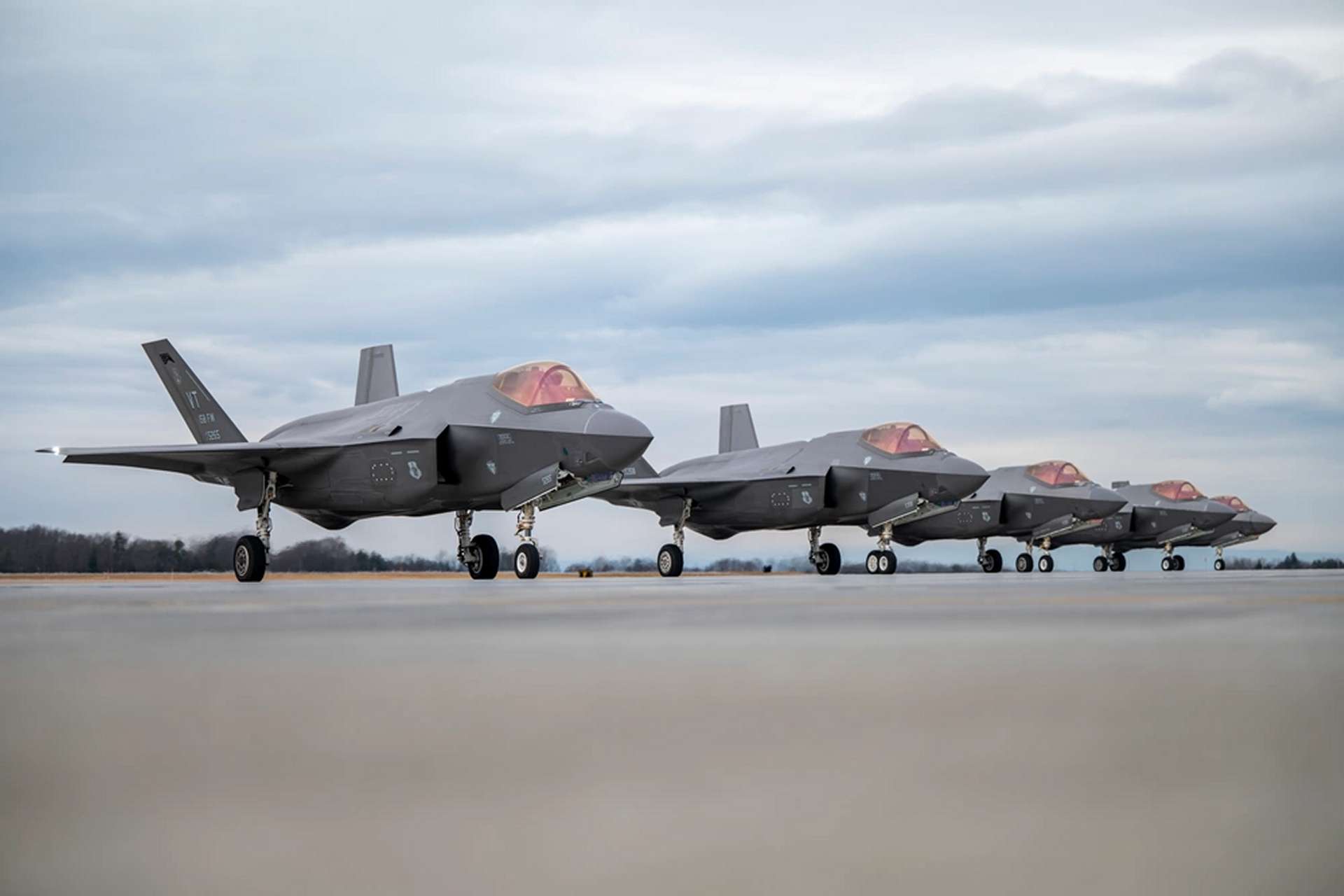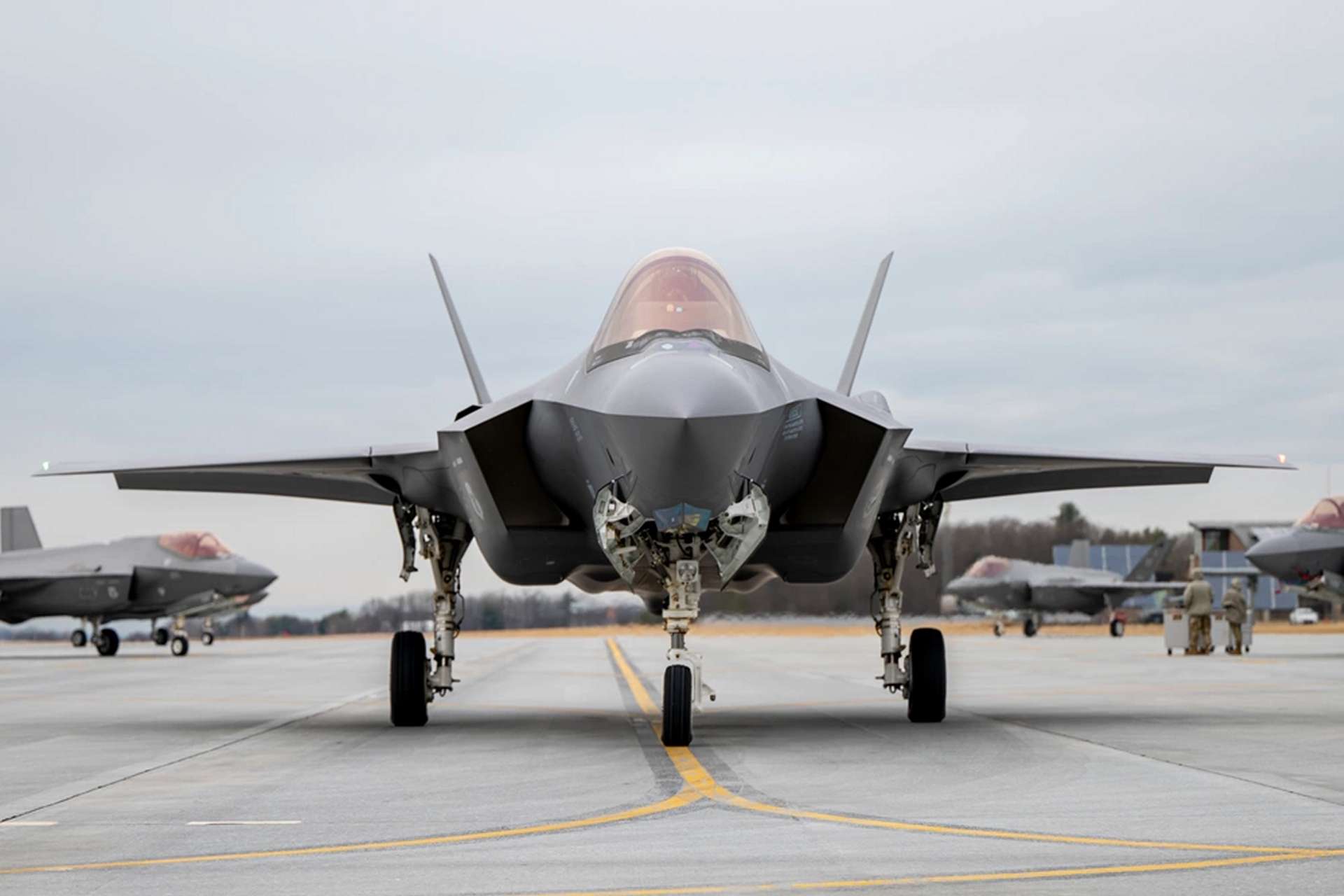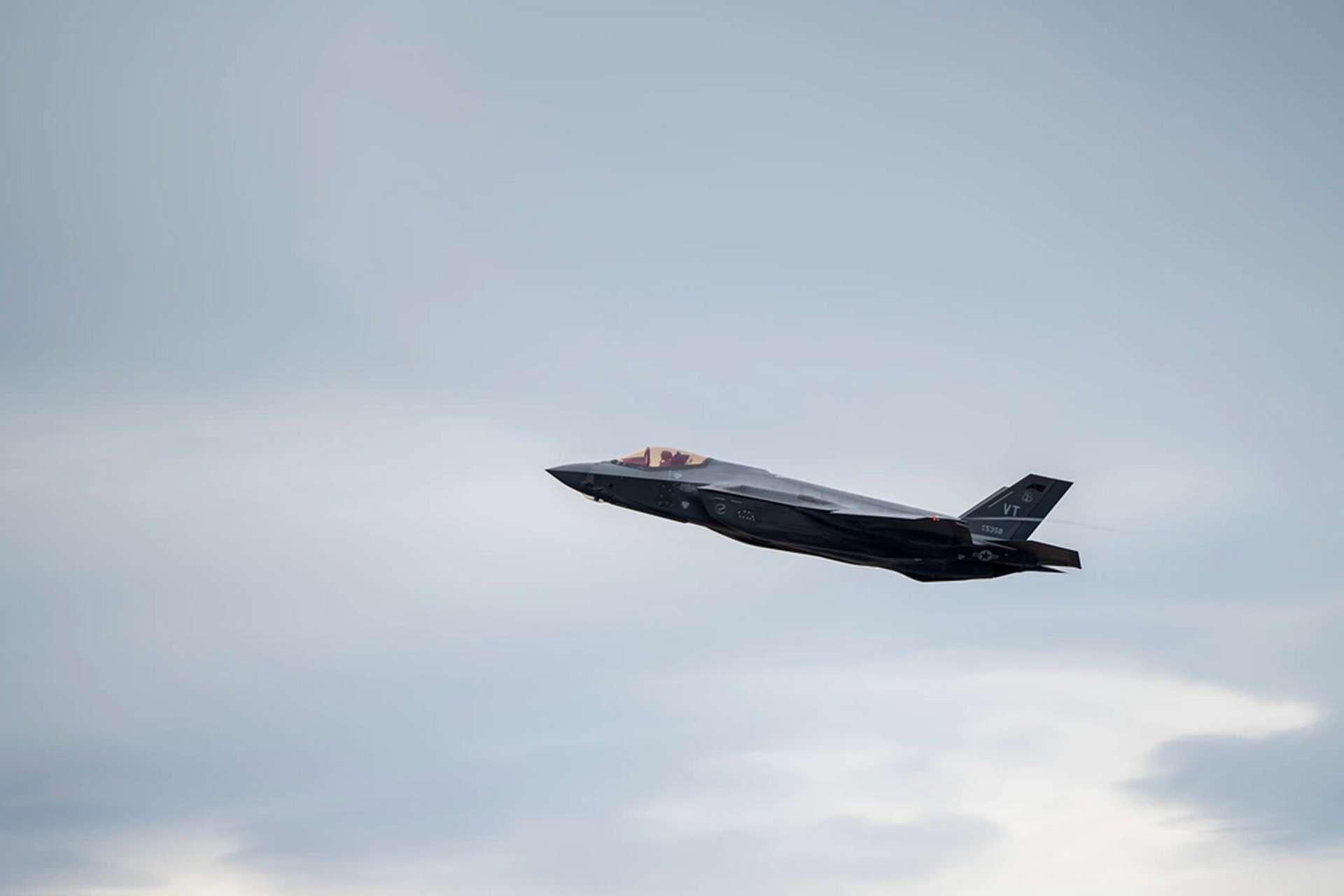US Air National Guard Trains in Austria with F-35 Lightning II Multirole Combat Aircraft

{loadposition bannertop}
{loadposition sidebarpub}
The Vermont Air National Guard (VTANG) is preparing to deploy a contingent of Airmen and F-35 Lightning II aircraft to Austria. The deployment, scheduled for the morning of Wednesday, September 4, 2024, will see VTANG participating in the prestigious Airpower Air Show, followed by a multinational training exercise.Follow Army Recognition on Google News at this link
The F-35 Lightning II is a multi-role combat aircraft developed by Lockheed Martin. (Picture source: US DoD)
Colonel Michael Blair of the U.S. Air Force, commander of the 158th Operations Group, emphasized the importance of the mission, acknowledging the potential disruption to the local community due to the early departure. “We recognize that an early departure can affect our community, and we are grateful for their patience and support,” Blair said. “Our upcoming training will strengthen international ties and ultimately benefit our national security and global stability.”
Austria holds a special place in VTANG’s international efforts as the third partner country under the State Partnership Program (SPP). The SPP is designed to foster a cooperative, mutually beneficial relationship between state National Guards and their partner nations, encompassing military forces, security forces, and disaster response organizations.
Colonel Blair highlighted the value of this partnership, noting that the connections established through the SPP have been crucial in building strong, lasting relationships. “Training alongside the Austrian Air Force not only improves tactical proficiency, advances interoperability and military cooperation, but also deepens mutual respect and reinforces shared objectives with our European allies,” he stated.
The Vermont Air National Guard (VTANG) is preparing to deploy a contingent of Airmen and F-35 Lightning II aircraft to Austria. (Picture source: US DoD)
The F-35 Lightning II, developed by Lockheed Martin, is a multi-role combat aircraft designed to meet the varied needs of modern armed forces. This fifth-generation fighter is the result of a massive investment, reaching $406.5 billion in 2016, with a total projected cost exceeding $1 trillion. The F-35 made its first flight on June 11, 2008 (F-35B version), and has been gradually introduced into service: in 2015 for the F-35A version, in 2016 for the F-35B, and in 2019 for the F-35C.
Designed for versatility, the F-35 is equipped with a single Pratt & Whitney F135 turbofan engine with afterburner, capable of generating 178 kN of thrust. The aircraft’s dimensions vary slightly depending on the version, with a wingspan of 10.40 meters for the F-35A and F-35B, and 13.10 meters for the F-35C. The aircraft is 15.85 meters long and 5.28 meters high. Its wing area also differs, with 42.7 m² for the F-35A and F-35B, and 57.6 m² for the F-35C.
The F-35 is a robust aircraft, with an empty weight ranging from 13,170 kg for the F-35A to 14,580 kg for the F-35B. When armed, it can reach a weight of 19,000 kg, and its maximum weight can go up to 25,600 kg. The aircraft can reach a maximum speed of 1,700 km/h, or Mach 1.6, and fly at an altitude of 18,500 meters. Its range varies according to the version, from 869 km for the F-35B to 1,138 km for the F-35C, with an overall range exceeding 2,800 km.
In terms of performance, the F-35 stands out with a thrust-to-weight ratio greater than 1, allowing for high maneuverability, with a maximum G-force of +9 G for the F-35A and +7 G for the B and C versions. In terms of armament, it is equipped with an internal 25 mm GAU-22 cannon, as well as two internal weapon bays capable of carrying up to 2,800 kg of munitions. Externally, it has six pylons capable of carrying an additional 6,800 kg.
The F-35 is also equipped with advanced avionics, including an AN/APG-81 radar and an AN/AAQ-37 infrared sensor, providing it with highly advanced detection and targeting capabilities, making this aircraft versatile and remarkably effective in a wide range of missions.
As VTANG prepares to take flight over Austria, this mission reflects the growing importance of multinational collaboration in addressing global security challenges and maintaining peace through shared military objectives.
F-35A Lightning II assigned to the 134th Fighter Squadron, 158th Fighter Wing, Vermont Air National Guard. (Picture source: US DoD)

{loadposition bannertop}
{loadposition sidebarpub}
The Vermont Air National Guard (VTANG) is preparing to deploy a contingent of Airmen and F-35 Lightning II aircraft to Austria. The deployment, scheduled for the morning of Wednesday, September 4, 2024, will see VTANG participating in the prestigious Airpower Air Show, followed by a multinational training exercise.
Follow Army Recognition on Google News at this link
The F-35 Lightning II is a multi-role combat aircraft developed by Lockheed Martin. (Picture source: US DoD)
Colonel Michael Blair of the U.S. Air Force, commander of the 158th Operations Group, emphasized the importance of the mission, acknowledging the potential disruption to the local community due to the early departure. “We recognize that an early departure can affect our community, and we are grateful for their patience and support,” Blair said. “Our upcoming training will strengthen international ties and ultimately benefit our national security and global stability.”
Austria holds a special place in VTANG’s international efforts as the third partner country under the State Partnership Program (SPP). The SPP is designed to foster a cooperative, mutually beneficial relationship between state National Guards and their partner nations, encompassing military forces, security forces, and disaster response organizations.
Colonel Blair highlighted the value of this partnership, noting that the connections established through the SPP have been crucial in building strong, lasting relationships. “Training alongside the Austrian Air Force not only improves tactical proficiency, advances interoperability and military cooperation, but also deepens mutual respect and reinforces shared objectives with our European allies,” he stated.

The Vermont Air National Guard (VTANG) is preparing to deploy a contingent of Airmen and F-35 Lightning II aircraft to Austria. (Picture source: US DoD)
The F-35 Lightning II, developed by Lockheed Martin, is a multi-role combat aircraft designed to meet the varied needs of modern armed forces. This fifth-generation fighter is the result of a massive investment, reaching $406.5 billion in 2016, with a total projected cost exceeding $1 trillion. The F-35 made its first flight on June 11, 2008 (F-35B version), and has been gradually introduced into service: in 2015 for the F-35A version, in 2016 for the F-35B, and in 2019 for the F-35C.
Designed for versatility, the F-35 is equipped with a single Pratt & Whitney F135 turbofan engine with afterburner, capable of generating 178 kN of thrust. The aircraft’s dimensions vary slightly depending on the version, with a wingspan of 10.40 meters for the F-35A and F-35B, and 13.10 meters for the F-35C. The aircraft is 15.85 meters long and 5.28 meters high. Its wing area also differs, with 42.7 m² for the F-35A and F-35B, and 57.6 m² for the F-35C.
The F-35 is a robust aircraft, with an empty weight ranging from 13,170 kg for the F-35A to 14,580 kg for the F-35B. When armed, it can reach a weight of 19,000 kg, and its maximum weight can go up to 25,600 kg. The aircraft can reach a maximum speed of 1,700 km/h, or Mach 1.6, and fly at an altitude of 18,500 meters. Its range varies according to the version, from 869 km for the F-35B to 1,138 km for the F-35C, with an overall range exceeding 2,800 km.
In terms of performance, the F-35 stands out with a thrust-to-weight ratio greater than 1, allowing for high maneuverability, with a maximum G-force of +9 G for the F-35A and +7 G for the B and C versions. In terms of armament, it is equipped with an internal 25 mm GAU-22 cannon, as well as two internal weapon bays capable of carrying up to 2,800 kg of munitions. Externally, it has six pylons capable of carrying an additional 6,800 kg.
The F-35 is also equipped with advanced avionics, including an AN/APG-81 radar and an AN/AAQ-37 infrared sensor, providing it with highly advanced detection and targeting capabilities, making this aircraft versatile and remarkably effective in a wide range of missions.
As VTANG prepares to take flight over Austria, this mission reflects the growing importance of multinational collaboration in addressing global security challenges and maintaining peace through shared military objectives.

F-35A Lightning II assigned to the 134th Fighter Squadron, 158th Fighter Wing, Vermont Air National Guard. (Picture source: US DoD)




